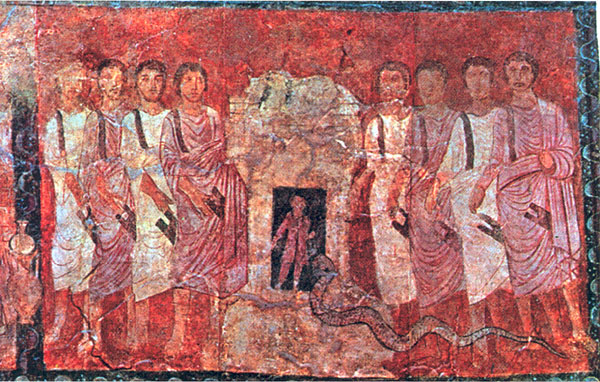Image Details

E. Goodenough, Symbolism in the Dura Synogogue (Princeton Univ. Press)
The contest on Mt. Carmel. Elijah’s challenge of “the 450 prophets of Baal and the 400 prophets of Asherah who eat at Jezebel’s table” (1 Kings 18:19) is depicted in two scenes on the walls of the third-century C.E. synagogue at Dura-Europos, in modern Syria. Painted in tempera on dry plaster smeared over mud-brick walls, the scenes from the Dura synagogue are among the earliest known biblical images.
According to 1 Kings 18, Elijah proposed that both he and the prophets of Baal lay a single bull on an altar and then pray to their respective deities—Yahweh and Baal—to ignite the sacrificial animal. Whichever deity responded would be deemed the more powerful and the one true God.
In the painting shown here, the priests of Baal gather around their altar, crying out, “O, Baal, answer us,” but their sacrifice remains untouched. The small man standing inside the altar in this painting does not appear in the biblical story, but rather in a later midrash, or rabbinic elaboration on the story. According to this midrash, when the prophets of Baal realized they would fail, a man named Hiel agreed to hide within the altar to ignite the heifer from below. The Israelite God foiled their plan by sending a snake (in the foreground) to bite Hiel, who subsequently died (compare with painting of Elijah and his followers).
